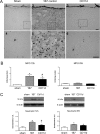Treatment with an anti-CD11d integrin antibody reduces neuroinflammation and improves outcome in a rat model of repeated concussion
- PMID: 23414334
- PMCID: PMC3598378
- DOI: 10.1186/1742-2094-10-26
Treatment with an anti-CD11d integrin antibody reduces neuroinflammation and improves outcome in a rat model of repeated concussion
Abstract
Background: Concussions account for the majority of traumatic brain injuries (TBI) and can result in cumulative damage, neurodegeneration, and chronic neurological abnormalities. The underlying mechanisms of these detrimental effects remain poorly understood and there are presently no specific treatments for concussions. Neuroinflammation is a major contributor to secondary damage following more severe TBI, and recent findings from our laboratory suggest it may be involved in the cumulative properties of repeated concussion. We previously found that an anti-CD11d monoclonal antibody that blocks the CD11d/CD18 integrin and adhesion molecule interaction following severe experimental TBI reduces neuroinflammation, oxidative activity, and tissue damage, and improves functional recovery. As similar processes may be involved in repeated concussion, here we studied the effects of the anti-CD11d treatment in a rat model of repeated concussion.
Methods: Rats were treated 2 h and 24 h after each of three repeated mild lateral fluid percussion injuries with either the CD11d antibody or an isotype-matched control antibody, 1B7. Injuries were separated by a five-day inter-injury interval. After the final treatment and either an acute (24 to 72 h post-injury) or chronic (8 weeks post-injury) recovery period had elapsed, behavioral and pathological outcomes were examined.
Results: The anti-CD11d treatment reduced neutrophil and macrophage levels in the injured brain with concomitant reductions in lipid peroxidation, astrocyte activation, amyloid precursor protein accumulation, and neuronal loss. The anti-CD11d treatment also improved outcome on tasks of cognition, sensorimotor ability, and anxiety.
Conclusions: These findings demonstrate that reducing inflammation after repeated mild brain injury in rats leads to improved behavioral outcomes and that the anti-CD11d treatment may be a viable therapy to improve post-concussion outcomes.
Figures









References
-
- Cassidy JD, Carroll LJ, Peloso PM, Borg J, von Holst H, Holm L, Kraus J, Coronado VG. Incidence, risk factors and prevention of mild traumatic brain injury: results of the WHO Collaborating Centre Task Force on Mild Traumatic Brain Injury. J Rehabil Med. 2004;43(Suppl):28–60. - PubMed
-
- Shultz SR, Bao F, Omana V, Chiu C, Brown A, Cain DP. Repeated mild lateral fluid percussion brain injury in the rat causes cumulative long-term behavioral impairments, neuroinflammation, and cortical loss in an animal model of repeated concussion. J Neurotrauma. 2012;29:281–294. doi: 10.1089/neu.2011.2123. - DOI - PubMed
Publication types
MeSH terms
Substances
Grants and funding
LinkOut - more resources
Full Text Sources
Other Literature Sources
Medical
Research Materials

